 The food and decorations that make the holidays so much fun for us can be dangerous for your pet. We do not want this blog post to dampen your holiday spirits, but we do want you to be aware of the dangers and plan carefully to avoid these potential hazards.
The food and decorations that make the holidays so much fun for us can be dangerous for your pet. We do not want this blog post to dampen your holiday spirits, but we do want you to be aware of the dangers and plan carefully to avoid these potential hazards.
Food and Food-Related Items
Holiday foods we enjoy cooking and eating can be a problem for your pet. Rich, fatty foods, like gravy or grease, can cause problems ranging from stomach upsets to pancreatitis, which is an inflammation of the pancreas resulting in pain, vomiting, and dehydration. Cats with this serious condition often require hospitalization for treatment.
Alcohol can cause serious intoxication for pets, and many pets are attracted to it. Clean up glasses after holiday parties. Cats are often attracted by the sweet taste of drinks, especially eggnog.
Chocolate, coffee, and tea all contain dangerous components called xanthines, which cause nervous system or urinary system damage and heart muscle stimulation. Although chocolate ingestion is more of a problem in dogs, cats may also have signs ranging from diarrhea to seizures and death. Unsweetened baking chocolate and dark chocolate are the worst culprits, but all chocolate, fudge, and other candy should be placed out of your cat’s reach.
Uncooked meat, fish, and poultry can contain disease- causing bacteria, such as E. coli, and parasites such as Toxoplasma gondii. These uncooked foods should not be given to your cat. For your own health, as well as your pet’s, wash utensils that have been in contact with raw meat, and cook meat thoroughly.
causing bacteria, such as E. coli, and parasites such as Toxoplasma gondii. These uncooked foods should not be given to your cat. For your own health, as well as your pet’s, wash utensils that have been in contact with raw meat, and cook meat thoroughly.
Bones from fish, meat, or poultry can also cause problems if swallowed. Even small bones can splinter causing lacerations (tearing) throughout the intestinal tract. So, no matter how big or how little they are, be sure to keep bones (other than those that are specially sterilized and treated) away from your pet.
Tobacco products can be fatal to pets if ingested. Signs of poisoning develop within 15 to 45 minutes and include excitation, salivation, vomiting, and diarrhea. Pets may develop seizures, collapse, and die from cardiac arrest. Keep cigarettes, cigars, tobacco, nicotine gum and patches, and ashtrays out of the reach of pets. Empty ashtrays frequently since cigarettes butts contain about 25% of the total nicotine in a cigarette.
Uncooked yeast dough can expand and produce gas in the digestive system, causing pain and possible rupture of the stomach or intestines.
Grapes and raisins contain an unknown toxin, which can damage the kidneys.
Remember, cats have an exceptional sense of smell – juices on plastic or aluminum foil left on countertops are very tempting. If ingested, plastic or foil wrap (cellophane candy wrappers or food wrap) can cause choking or intestinal obstruction. Meat-soaked strings from rump roasts are also enticing. Ingestion can be the cause of a surgical emergency called a “linear string foreign body” in the intestines. To be safe, put away food immediately and pet-proof your garbage.
Garbage contains all kinds of other hazards for your cat such as plastic wrap and bags, 6-pack beverage holders that can cause strangulation, fat trimmings, bones, and pieces of ribbon or tinsel. Feed your pet(s) before a party so they will not be so apt to beg or steal food.
Poisonous Plants
 We all like making our homes more festive for the holidays. We enjoy the green foliage and colorful flowers of plants. Unfortunately, many of the plants we have in our homes during the holidays can be poisonous to pets. If ingested, holly (leaves and berries) causes stomach upset and can be potentially fatal to both cats and dogs. Mistletoe upsets stomachs and can cause heart collapse, while hibiscus may cause diarrhea. Poinsettias have an irritating sap that can cause blistering in the mouth and stomach upset. When you brighten up your home, place these plants well out of your cat’s reach, or use imitation holiday plants.
We all like making our homes more festive for the holidays. We enjoy the green foliage and colorful flowers of plants. Unfortunately, many of the plants we have in our homes during the holidays can be poisonous to pets. If ingested, holly (leaves and berries) causes stomach upset and can be potentially fatal to both cats and dogs. Mistletoe upsets stomachs and can cause heart collapse, while hibiscus may cause diarrhea. Poinsettias have an irritating sap that can cause blistering in the mouth and stomach upset. When you brighten up your home, place these plants well out of your cat’s reach, or use imitation holiday plants.
Decorations and Wrappings
All that glitters is not gold – and it could be dangerous for your pet. Ribbons, yarn, and string can cause intestinal obstruction and bunching of the intestine along the length of the string. These conditions require surgery and can be fatal. Ribbons around your cat’s neck may be cute, but they can also be dangerous.
Adhesives and glues can be toxic and are often attractive to animals.
Potpourri contains oils that can be toxic to cats if eaten. We may not think of eating it, but some curious pets may.
Candles can cause burns and fires. Never leave lighted candles unattended or within reach of your pet.
Gifts Under the Tree
Edible items left under the tree can be very tempting. Remember that companies (even Drs. Foster & Smith!) often package pet gifts wrapped in ribbon. Make sure to remove ribbons or ties before you present gifts to your cat. If played with and swallowed, yarn, ribbon, or string on gifts can cause intestinal obstruction, requiring surgery. Perfumes and adhesives contain ethanol (alcohol), and perfume also contains essential oils which can be very toxic to cats if ingested. Batteries for toys or other gifts can be toxic and cause intestinal obstruction. Keep them in a safe place until they are ready to be inserted in the gift.
This blog post was adapted from a newsletter article originally written by Marty Smith, DVM and Holly Nash, DVM, MS, Drs. Foster & Smith, Inc.
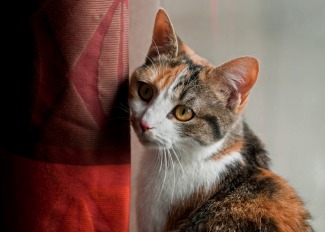 1. Always give generously. A small bird or rodent left on the bed tells them you care.
1. Always give generously. A small bird or rodent left on the bed tells them you care.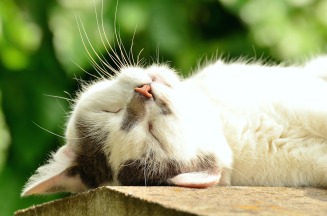


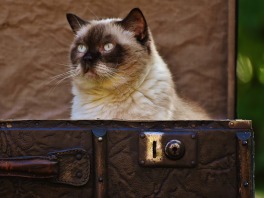 me, it is 16 years and up. Some people are afraid to adopt an older cat because they fear losing their beloved new family member too soon. Of course, there are no guarantees in life, but cats generally live much longer than most dog breeds, especially Siamese cats. Cats over 20 are not hard to find. With appropriate healthcare, just as with humans, animals are getting older. If you think about it a certain way, adopting a 10-year-old cat is not much different than adopting a large-breed puppy.
me, it is 16 years and up. Some people are afraid to adopt an older cat because they fear losing their beloved new family member too soon. Of course, there are no guarantees in life, but cats generally live much longer than most dog breeds, especially Siamese cats. Cats over 20 are not hard to find. With appropriate healthcare, just as with humans, animals are getting older. If you think about it a certain way, adopting a 10-year-old cat is not much different than adopting a large-breed puppy. People often think it is easier to integrate a kitten and that an older cat may come with past baggage, making it difficult to adjust quickly. Usually, the opposite is true. Like many shelter animals, cats just want to belong. A cat growing up with amenities knows a good thing when she sees it and really wants to be a part of it. Older cats also know all about litter boxes and do not need a lot of training. They forgive you if you work late and will not be waiting to greet you from atop the curtain rod.
People often think it is easier to integrate a kitten and that an older cat may come with past baggage, making it difficult to adjust quickly. Usually, the opposite is true. Like many shelter animals, cats just want to belong. A cat growing up with amenities knows a good thing when she sees it and really wants to be a part of it. Older cats also know all about litter boxes and do not need a lot of training. They forgive you if you work late and will not be waiting to greet you from atop the curtain rod.




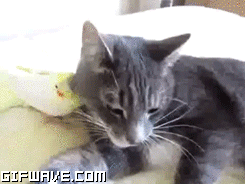








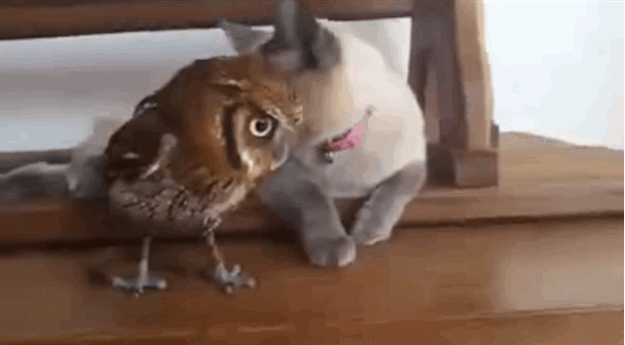



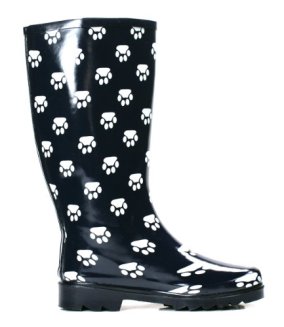
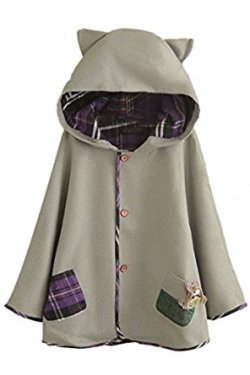
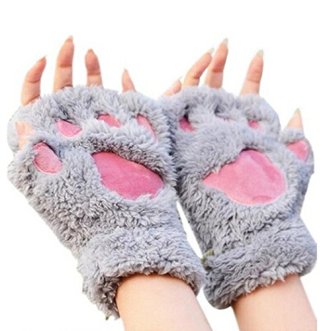


 decorations can create hazards for pets. Place Christmas trees in a stable stand and attach the tree securely to a window or wall with something like fishing line. We have known people who have hung their tree from the ceiling! To keep pets away from the tree, it may help to use a Scat Mat. Even though you are taking precautions, make sure your cat is always supervised when in a room with a tree.
decorations can create hazards for pets. Place Christmas trees in a stable stand and attach the tree securely to a window or wall with something like fishing line. We have known people who have hung their tree from the ceiling! To keep pets away from the tree, it may help to use a Scat Mat. Even though you are taking precautions, make sure your cat is always supervised when in a room with a tree. Some pets love visitors and behave very well; Others may be fearful and aggressive. Plan for how your cat will react to visitors. A quiet room away from the commotion with water, food, and a litter box available will help fearful cats be more comfortable. Brushing up on obedience training before the holidays may help a pet who has become a little rusty. Be sure to inform your visitors of any household rules or problem behaviors concerning your pets, e.g. sneaking out the door, jumping up on the couch, getting food from the table, etc. For pets who may not behave or could be aggressive, placing them in a separate room, using pet gates, or having them stay at a friend’s house during a party may be necessary. Sometimes boarding a pet in a kennel is the safest alternative.
Some pets love visitors and behave very well; Others may be fearful and aggressive. Plan for how your cat will react to visitors. A quiet room away from the commotion with water, food, and a litter box available will help fearful cats be more comfortable. Brushing up on obedience training before the holidays may help a pet who has become a little rusty. Be sure to inform your visitors of any household rules or problem behaviors concerning your pets, e.g. sneaking out the door, jumping up on the couch, getting food from the table, etc. For pets who may not behave or could be aggressive, placing them in a separate room, using pet gates, or having them stay at a friend’s house during a party may be necessary. Sometimes boarding a pet in a kennel is the safest alternative. give them in moderation. Spending quality time with your favorite companion during the holidays will help keep your pet calm. With all of the festivities, do not forget to relax and spend some quality time with your pet. Your cat will think that is the best gift of all.
give them in moderation. Spending quality time with your favorite companion during the holidays will help keep your pet calm. With all of the festivities, do not forget to relax and spend some quality time with your pet. Your cat will think that is the best gift of all. The food and decorations that make the holidays so much fun for us can be dangerous for your pet. We do not want this blog post to dampen your holiday spirits, but we do want you to be aware of the dangers and plan carefully to avoid these potential hazards.
The food and decorations that make the holidays so much fun for us can be dangerous for your pet. We do not want this blog post to dampen your holiday spirits, but we do want you to be aware of the dangers and plan carefully to avoid these potential hazards. causing bacteria, such as E. coli, and parasites such as Toxoplasma gondii. These uncooked foods should not be given to your cat. For your own health, as well as your pet’s, wash utensils that have been in contact with raw meat, and cook meat thoroughly.
causing bacteria, such as E. coli, and parasites such as Toxoplasma gondii. These uncooked foods should not be given to your cat. For your own health, as well as your pet’s, wash utensils that have been in contact with raw meat, and cook meat thoroughly. We all like making our homes more festive for the holidays. We enjoy the green foliage and colorful flowers of plants. Unfortunately, many of the plants we have in our homes during the holidays can be poisonous to pets. If ingested, holly (leaves and berries) causes stomach upset and can be potentially fatal to both cats and dogs. Mistletoe upsets stomachs and can cause heart collapse, while hibiscus may cause diarrhea. Poinsettias have an irritating sap that can cause blistering in the mouth and stomach upset. When you brighten up your home, place these plants well out of your cat’s reach, or use imitation holiday plants.
We all like making our homes more festive for the holidays. We enjoy the green foliage and colorful flowers of plants. Unfortunately, many of the plants we have in our homes during the holidays can be poisonous to pets. If ingested, holly (leaves and berries) causes stomach upset and can be potentially fatal to both cats and dogs. Mistletoe upsets stomachs and can cause heart collapse, while hibiscus may cause diarrhea. Poinsettias have an irritating sap that can cause blistering in the mouth and stomach upset. When you brighten up your home, place these plants well out of your cat’s reach, or use imitation holiday plants. are wonderful, adorable, enthusiastic, and playful. They are also full of energy and a lot of work. If you have a full-time job and plan to leave your feline friend alone for long stretches of time, your kitten might get bored and have an adventure with your furniture and your drapes. If you feel like you are ready for this, though, a kitten can be a joy to have in your life.
are wonderful, adorable, enthusiastic, and playful. They are also full of energy and a lot of work. If you have a full-time job and plan to leave your feline friend alone for long stretches of time, your kitten might get bored and have an adventure with your furniture and your drapes. If you feel like you are ready for this, though, a kitten can be a joy to have in your life. In addition to making sure you have some one-on-one time with potential cat-didates, make sure to ask the cat’s caretakers about the cat’s personality when strangers aren’t around. You probably won’t be able to get a complete picture of what your kitty will be like in your home until he or she is actually there, but it is important to acquire as much information as you can.
In addition to making sure you have some one-on-one time with potential cat-didates, make sure to ask the cat’s caretakers about the cat’s personality when strangers aren’t around. You probably won’t be able to get a complete picture of what your kitty will be like in your home until he or she is actually there, but it is important to acquire as much information as you can. Is there a veterinarian or emergency clinic nearby?
Is there a veterinarian or emergency clinic nearby?
